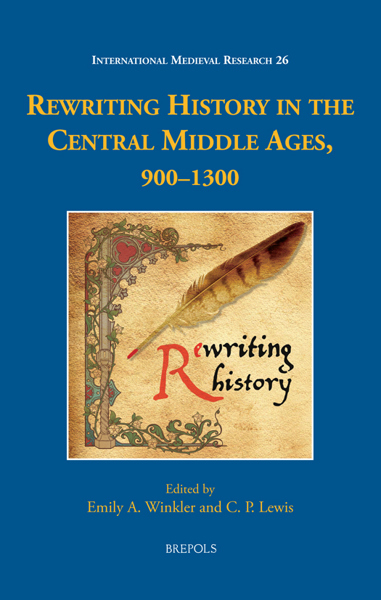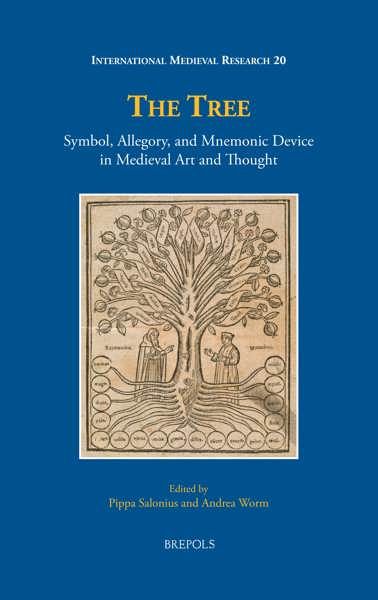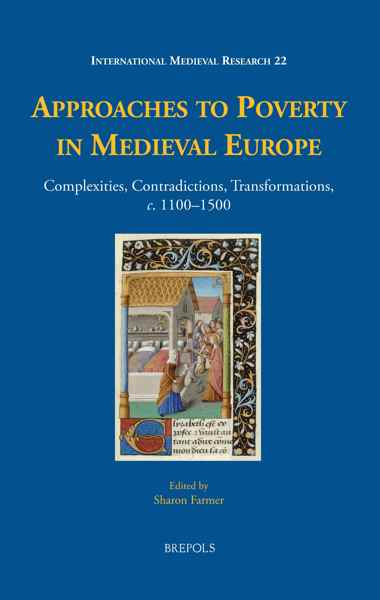
The Tree
Symbol, Allegory, and Mnemonic Device in Medieval Art and Thought
Pippa Salonius, Andrea Worm (eds)
- Pages: xviii + 258 p.
- Size:216 x 280 mm
- Illustrations:102 b/w, 4 col.
- Language(s):English
- Publication Year:2014
- € 150,00 EXCL. VAT RETAIL PRICE
- ISBN: 978-2-503-54839-5
- Paperback
- Available
- € 150,00 EXCL. VAT RETAIL PRICE
- ISBN: 978-2-503-54891-3
- E-book
- Available
This collection of essays presents a series of case studies analysing different manifestations of trees in the art and thought of the Middle Ages.
"This volume is a valuable addition to the scholarship on late medieval visual practices in architectural and manuscript contexts, and also to the literature on pedagogical and organisational devices employed in medieval intellectual texts. The editors and chapter contributors are to be commended on this achievement." (Carole M. Cusack, in: Parergon, 31.2, 2014, p. 210-211)
"In their introduction, with its concise overview of recent scholarship on trees, diagrams, memory, and classifications of knowledge, the editors assert that one of the goals of the volume is “to draw attention to the various interconnections and crosscurrents between allegorical, symbolic, and structural uses of trees”. These nine essays achieve this goal by presenting close analyses and thoughtful arguments on well-known and more unusual examples of diagrams, historiated trees, and trees in narrative contexts. (...) The editors’ decisions to list manuscripts and primary sources in bibliographies, to include appendices with their own contributions, to translate one of the chapters, and to organize the studies according to thematic arcs advance this volume beyond a simple assortment of essays. (...) In conclusion, this is an engaging and important work for scholars and students interested in iconography, metaphors, text-image relationships, liturgical space, pedagogical practices, private or communal devotion, mendicant identity, images of redemption, environmental issues, and structures of time and history, among many other topics." (Danielle B. Joyner, in: Speculum, 90/2, April 2015, p. 583-584)
"(...) the book provides an effective assessment of the state of research relating to medieval visual representations of trees. Researchers working on specific artworks or historical contexts discussed in The Tree will also want to consult the volume. More broadly, the book will interest scholars studying word/images relationships, the role of diagrams in structuring knowledge, and mnemonic practices." (Kerry Paul Boeye, in: The Medieval Review, 15.06.30)
"Der sorgfältig redigierte und bebilderte Band ist eine hilfreiche Einführung in diesen Themenbereich und präsentiert neues, kaum bekanntes Material." (Wolfgang Augustyn, in: Sehepunkte, 15/6, 2015)
"In the process of selection of these essays, the editors have sought to assemble a well-rounded book that would adequately inform and “encourage others in their own exploration” of the subject, “leading to further ramifications and growth in the argument” (p. 9). In this endeavor, they have largely succeeded." (Walter Cahn, in: The Catholic Historical Review, autumn 2015, p. 913-915)
"Der sehr gelungene, interdisziplinär höchst anregende Band ist mit qualitätsvollen Abbildungen (...), einer umfangreichen Auswahlbibliographie und eindem Namenregister bestens aufbereitet. Dies macht ihn zu einem Nachschlagewerk für die Erforschung der Ikonographie und Metaphorik des Baummotivs, für Diskurse um Genealogie, Bild-Text-Bezug, Liturgieraum und mendikantische wie prämonstratensische Identität sowie für Memorierpraktiken und Wissenorganisation." (Ingrid Baumgärtner, in: Das Mittelalter 21, 2 [2016], p. 476-478)
"This well-illustrated book is a valuable contribution to the recent scholarship on mnemonic devices and visual culture in the Middle Ages, which will hopefully stimulate further exploration of the topic.” (Marjorie Burghart, in Religious Studies Review, 42/4, 2016, p. 298)
« Ce livre à la fois érudit et accessible, pointu dans ses analyses, mais large dans sa problématique, et servi par une iconographie magnifique, intéressera non seulement les médiévistes, mais aussi les ethnologues et les historiens d’art. » (Carmen Bernand, dans Archives de sciences sociales des religions, 2017, p. 431)
With its vital character - growing, flowering, extending its roots into the ground, and its branches and leaves to the sky - the tree is a polyvalent metaphor, a suggestive symbol, and an allegorical subject. During the Middle Ages, a number of iconographic schemata were based on the image and structure of the tree, including the Tree of Jesse and the Tree of Virtues and Vices. From the late eleventh century onwards such formulae were increasingly used as devices for organizing knowledge and representing theoretical concepts. Despite the abstraction inherent in these schemata, however, the semantic qualities of trees persist in their usage.
The analysis of different manifestations of trees in the Middle Ages is highly instructive for visual, intellectual, and cultural history. Essays in this volume concentrate on the formative period for arboreal imagery in the medieval West, that is, the eleventh to fifteenth centuries. Using a range of methodological strategies and examining material from different media, ranging from illuminated manuscripts to wall painting, stained glass windows, and monumental sculpture, the articles in this volume show how different arboreal structures were conceived, employed, and appropriated by their specific contexts, how they functioned in their original framework, and how they were perceived by their audience.
Preface
Introduction — PIPPA SALONIUS and ANDREA WORM
Stirps Jesse in capite ecclesiae: Iconographic and Liturgical Readings of the Tree of Jesse in Stained-Glass Windows Marie — PIERRE GELIN
Arbor autem humanum genus significat: Trees of Genealogy and Sacred History in the Twelfth Century — ANDREA WORM
Arbor genealogiae: Manifestations of the Tree in French Royal Genealogies Marigold — ANNE NORBYE
The Medieval Tree of Porphyry: An Organic Structure of Logic — ANNEMIEKE R. VERBOON
Visualizing Salvation: The Role of Arboreal Imagery in the Speculum humanae salvationis (Kremsmünster, Library of the Convent, Cod 243) — SUSANNE WITTEKIND
Two Trees in Paradise? A Case Study on the Iconography of the Tree of Knowledge and the Tree of Life in Italian Romanesque Sculpture — UTE DERCKS
The Tree as Narrative, Formal, and Allegorical Index in Representations of the Noli me tangere — BARBARA BAERT and LIESBET KUSTERS
Quasi lignum vitae: The Tree of Life as an Image of Mendicant Identity — ULRIKE ILG
Arbor Jesse – Lignum vitae: The Tree of Jesse, the Tree of Life, and the Mendicants in Late Medieval Orvieto — PIPPA SALONIUS
Select Bibliography
Index




